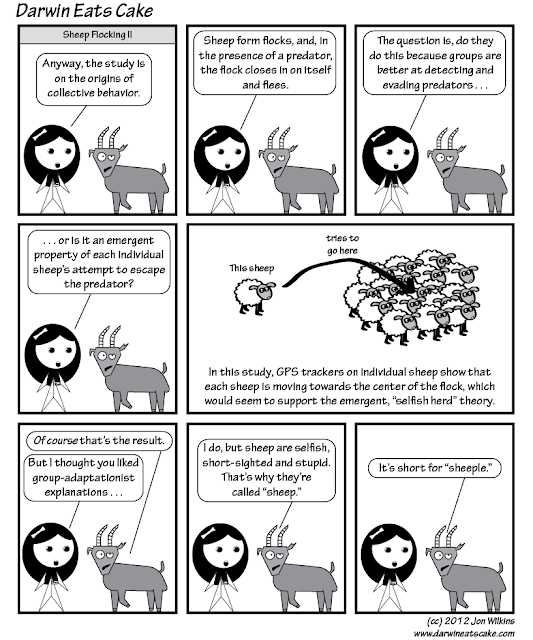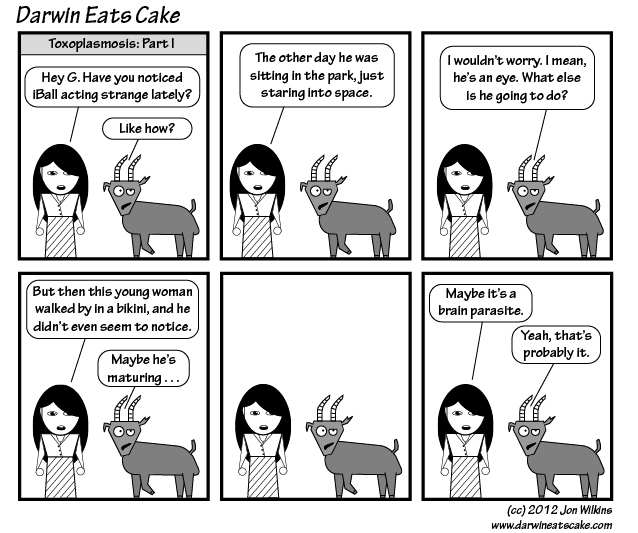So, you know how sometimes at night you’re lying in bed when you burp, but then the burp turns out to actually be you throwing up into your mouth just a little bit, and it tastes like a combination of whatever you ate for dinner and evil? Well, this is sort of like that.
Four years ago, a group of researchers from the University of Copenhagen published a nice paper on the genetics of blue eye color. In that paper they look at a bunch of Danish families in which some people have blue eyes and some have brown eyes (or, combination blue-brown eyes, which, for purposes of this study, are treated as non-blue). They also look at a small sample of non-Danish blue-eyed folks: five from Turkey and two from Jordan.
The paper makes a compelling case that the pure blue eyes phenotype depends on a particular nucleotide substitution that alters regulation of the gene OCA2. Furthermore, there is an extended haplotype around the key mutation that is shared by everyone in their sample (a few people have additional nucleotide substitutions that most likely post-date the key functional mutation). This suggests that, while there are many genes that contribute to eye color variation and to pigmentation in general, there may be a single critical mutation responsible for all of the blue eyes out there. Which is pretty cool.
For reasons that I still don’t understand, this study has popped back into the news recently. In particular, an article that looks to have been written back in 2008 in USA Today was “updated” in February, and has resurfaced on AOL, which describes it as a “study from USA Today,” and warns people with blue eyes about the dangers of falling in love with another blue-eyed beauty. Presumably because of incest (also shown is a clip from HLN — the artist formerly known as CNN Headline News — featuring the anchor doing a whole “ick” thing).
In worst-of-media-coverage-of-science fashion the reports that I have found (both from 2008 and from 2012), coverage focuses on stuff from the paper that is tangential, irrelevant, or wrong.
First, “all blue-eyed people are related.” Where to start. The researchers suggest that the mutation might have arisen 6000-10000 years ago in the Black Sea region, prior to the Neolithic agricultural expansion into Europe. If we assume a generation time of, say, 25 years, that is 240-400 generations. If we look back that far in the past, even just to the 6000 year mark, each of us has 2^240 ancestors. That’s 1.7 x 10^72, which, you will notice, is not just much larger than 7 x 10^9 (the current population of the whole world), but is close to the ballpark of the total number of atoms in the universe.
The fact is, once you go back more than a few hundred years, each of us has a list of ancestors that features the same people over and over again. Not only are we all related, we are all related over and over and over again. While your brother may not be your cousin, your tenth cousin is quite likely to be your seventh cousin as well.
So, yes, all blue-eyed people are related, but there is not really anything here to suggest that they are significantly more closely related than any two people.
Second, both the 6000-10000 year timeframe and the Black Sea origin of the mutation — both of which featured heavily in press coverage of the paper — are completely unsupported by anything in the data. What the authors actually say is this:
The mutations responsible for the blue eye color most likely originate from the neareast area or northwest part of the Black Sea region, where the great agriculture migration to the northern part of Europe took place in the Neolithic periods about 6–10,000 years ago (Cavalli-Sforza et al.1994).
The high frequency of blue-eyed individuals in the Scandinavia and Baltic areas indicates a positive selection for this phenotype (Cavalli-Sforza et al. 1994; Myant et al. 1997). Several theories has been suggested to explain the evolutionary selection for pigmentation traits which include UV expositor causing skin cancer, vitamin D deficiency, and also sexual selection has been mentioned. Natural selection as suggested here makes it difficult to calculate the age of the mutation.
That is, we don’t know how old the mutation is, and have not tried to perform any sort of analysis to ask the question. That’s fine, because what the paper actually does is provide us with a basis for asking these sorts of questions, although that will require more extensive sampling.
The supposition here is based solely on the fact that there was this expansion of agriculture (along with, to a not-fully-characterized extent, an expansion of the genes of the people who developed that early agricultural technology), and that stuff in Europe probably came with that.
The actual way to ask the question would be to go and sequence the DNA of a bunch of folks from all across Europe. To first approximation, we might assume that the mutation first arose in the region where the blue-eyes haplotype shows the greatest within-haplotype genetic diversity. For example, if the mutation first arose near the Black Sea, we should see more genetic variation right around the key mutation among blue-eyed people near the Black Sea. If the allele arrived more recently in Sweden, blue-eyed Swedes would be more genetically similar to each other in the same genomic region, simply because there would have been less time for differences to accumulate.
All else being equal, we might expect the geographical origin of a particular mutation to be at the central point of its range, or near the place where the mutation has reached its highest frequency. That supposition would place the origin somewhere near the Baltic (rather than the Black) Sea. But, there is good reason to believe that this mutation may have been subject to selection. The blue-eyes allele also affects other aspects of pigmentation, and lighter coloring is thought to have been favored at higher latitudes due to the reduced incidence of sunlight.
The fact that we think that natural selection would have pushed the mutation northward means that that its origin was probably somewhere to the South of its current center. Exactly how far depends on a bunch of details, like the strength of selection, and how that strength of selection changes as you move from South to North.
The problem is that, to do it right, you would have to build a model that explicitly incorporates the agricultural expansion and natural selection acting on OCA2, with the strength of selection favoring lighter pigmentation depending on latitude. Maybe also the fact that there are other genes affecting pigmentation. It is something that is doable, especially now that we have a specific gene to focus on, but at this point what we have is a bunch of speculation.
So, to recap, 1) Cool paper. 2) Sex between blue-eyed people is not incest. 3) We have no idea when or where this mutation came from, but it is now conceivable that we could ask the question. 4) Embarrassingly bad science reporting spontaneously rises from the grave four years later and tries to eat your brain.
Eiberg, H., Troelsen, J., Nielsen, M., Mikkelsen, A., Mengel-From, J., Kjaer, K., & Hansen, L. (2008). Blue eye color in humans may be caused by a perfectly associated founder mutation in a regulatory element located within the HERC2 gene inhibiting OCA2 expression Human Genetics, 123 (2), 177-187 DOI: 10.1007/s00439-007-0460-x


















